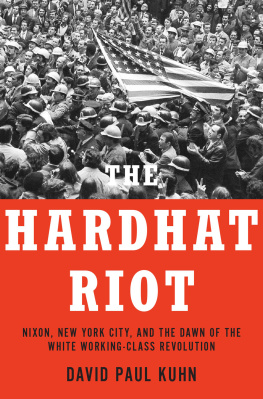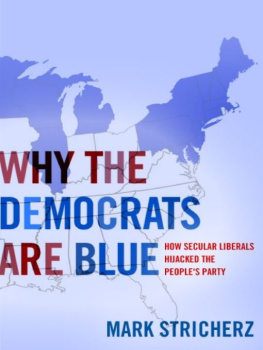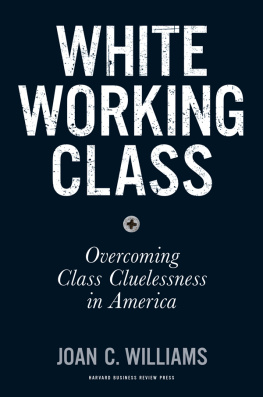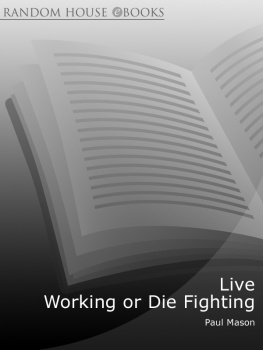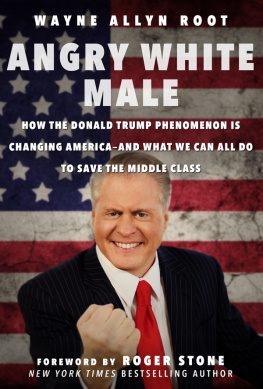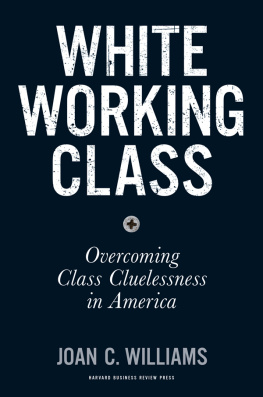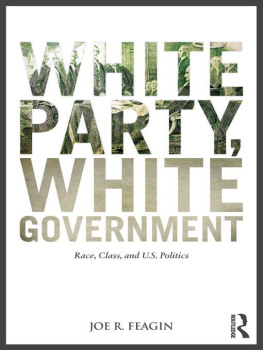ADVANCE PRAISE FOR THE HARDHAT RIOT
David Paul Kuhn has written perhaps the best book ever on how Democrats lost the white working class. The Hardhat Riot is a great read, but also a must-read to understand the voters that Democrats neglected at their own peril.
James Carville, former Chief Strategist for President Bill Clinton
Riveting...
Jill Lepore, The New Yorker
A gripping history of a moment when two visions of America clashedwith fists flyingthroughout the Wall Street district. The Hard-Hat Riot excavates conflicts over protest politics, American military power, and the party loyalties of the white working class that remain with us half a century later.
Beverly Gage, Professor of History and American Studies, Yale University
David Paul Kuhns The Hardhat Riot captures a seminal but long-neglected turning point in the steady erosion of Democratic support among the core of the New Deal Coalition. The May 8, 1970, confrontationAKA, Bloody Fridaybetween anti-war protestors, mostly students, and tough, unionized construction workers determined to demonstrate their support of American troops in Vietnam, marked the start of the split between a well-educated elite and an increasingly discontented working class, a split that over time produced the election of Donald Trump. This book is crucial for anyone seeking to understand the politics of 2020 and beyond.
Thomas B. Edsall, Contributing Opinion Writer, The New York Times, and author of Building Red America
David Paul Kuhn has breathed new life into an uproarious seminal event in modern political history, skillfully tracing fault lines running from the late 1960s up to the present. A timely, smart, adrenalin-fueled account conveyed with you-are-there immediacy.
Laurence Bergreen, author of Over the Edge of the World
This is red-meat history with a hot splash of tabasco. David Paul Kuhn brings to life a period that is not only fascinating in itself but also illuminates the age of Donald Trump. If you want to understand how blue-collar Americans came to feel so disparaged and deplored, The Hardhat Riot is a great place to start. A truly captivating read.
Robert Guest, Foreign Editor, The Economist
Sometimes events that are long forgotten have reverberations that dominate our times. In The Hardhat Riot, David Paul Kuhn skillfully shows how the split between traditionally Democratic constituenciesblue-collar workers and militant studentseerily foreshadows the bitter political splits of our time.
Michael Barone, author of The Almanac of American Politics and Emeritus Fellow, American Enterprise Institute
The Hardhat Riot is an arresting and often chilling narrative of the events that drove a wedge between white working-class voters and the Democratic Party, setting America on the road to todays right-wing populism. I couldnt stop reading it. If you want to understand why cultural issues became central to our politics, read this book.
William Galston, former policy advisor to President Clinton and Senior Fellow, the Brookings Institution
Trenchant.... A welcome resurrection of a forgotten riot with relevance for our current fragmented political landscape.
Kirkus
David Paul Kuhn details, with much new research, the changing political conditions before and after the spring of 1970, when Nixon saw the opportunity after the May 8 Hardhat Riot. No previous book has so convincingly documented how important this single event was in changing the class base of both the Republican and Democratic parties.
Joan Hoff, former president of the Center for the Study of the Presidency
I picked up David Paul Kuhns The Hardhat Riot with the intention of skimming and found myself engrossed, reading every page. Well-written, painstakingly researched, this is an important book that gives life to history and explains the divorce between working-class whites and the Democratic Party, and yet rarer still, is also a real pleasure to read.
Charlie Cook, Editor and Publisher of The Cook Political Report
Largely through the microcosm of New York City, David Paul Kuhns The Hardhat Riot delves deeply into the estrangement of the Democratic Party from Americas blue-collar workers. For all of its fascinating detail of the travails of Americas metropolis, The Hardhat Riot also offers a broad and rich panorama of American politics of the past 50 years and the most persuasive explanation for the rise of Donald Trump that has yet appeared.
Ross K. Baker, Professor of American Government, Rutgers University

Oxford University Press is a department of the University of Oxford. It furthers the Universitys objective of excellence in research, scholarship, and education by publishing worldwide. Oxford is a registered trade mark of Oxford University Press in the UK and certain other countries.
Published in the United States of America by Oxford University Press
198 Madison Avenue, New York, NY 10016, United States of America.
David Paul Kuhn 2020
All rights reserved. No part of this publication may be reproduced, stored in a retrieval system, or transmitted, in any form or by any means, without the prior permission in writing of Oxford University Press, or as expressly permitted by law, by license, or under terms agreed with the appropriate reproduction rights organization. Inquiries concerning reproduction outside the scope of the above should be sent to the Rights Department, Oxford University Press, at the address above.
You must not circulate this work in any other form and you must impose this same condition on any acquirer.
Library of Congress Cataloging-in-Publication Data
Names: Kuhn, David Paul, author.
Title: The hardhat riot : Nixon, New York City, and the dawn of the white
working-class revolution / David Paul Kuhn.
Description: New York, NY : Oxford University Press, [2020] |
Includes bibliographical references and index. |
Identifiers: LCCN 2019058321 (print) | LCCN 2019058322 (ebook) |
ISBN 9780190064716 (hardback) | ISBN 9780190064730 (epub)
Subjects: LCSH: RiotsNew York (State)New YorkHistory20th century. |
Anti-war demonstrationsNew York (State)New YorkHistory20th century. |
Student protestersViolence againstNew York (State)New YorkHistory20th century. |
Construction workersNew York (State)New YorkHistory20th century. |
Social conflictNew York (State)New YorkHistory20th century. |
United StatesSocial conditions19601980. | United StatesHistory1969
Classification: LCC HV6483.N7 K84 2020 (print) | LCC HV6483.N7 (ebook) |
DDC 363.32/309747109047dc23
LC record available at https://lccn.loc.gov/2019058321
LC ebook record available at https://lccn.loc.gov/2019058322
CONTENTS
I am seeking to rescue the poor stockinger, the Luddite cropper, the obsolete hand-loom weaver, the utopian artisan, and even the deluded... from the enormous condescension of posterity. Their crafts and traditions may have been dying. Their hostility to the new industrialism may have been backward-looking. Their communitarian ideals may have been fantasies. Their insurrectionary conspiracies may have been foolhardy. But they lived through these times of acute social disturbance, and we did not. Their aspirations were valid in terms of their own experience.

